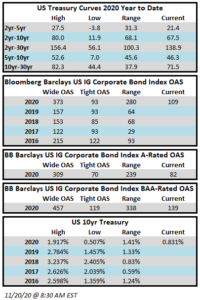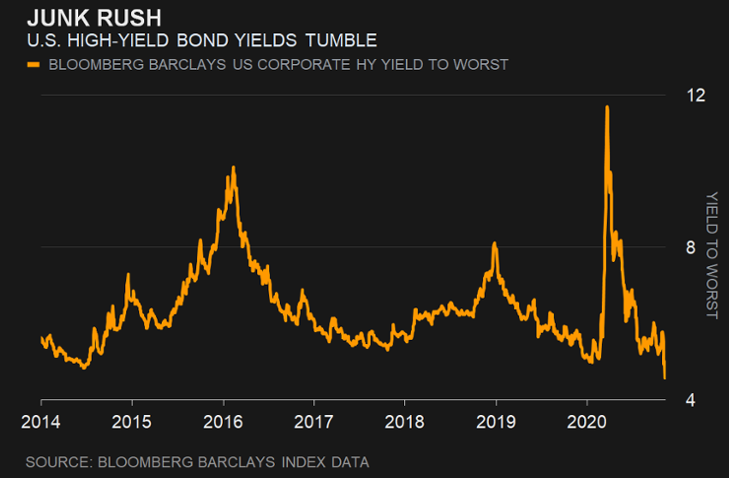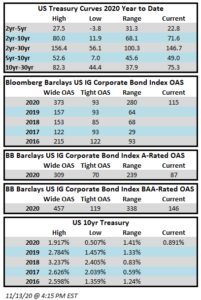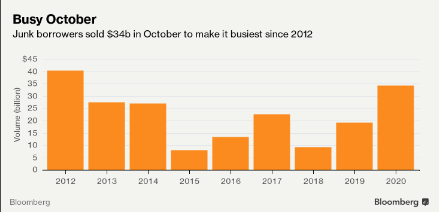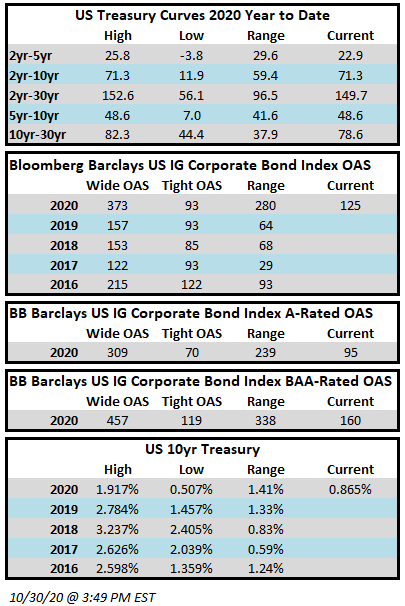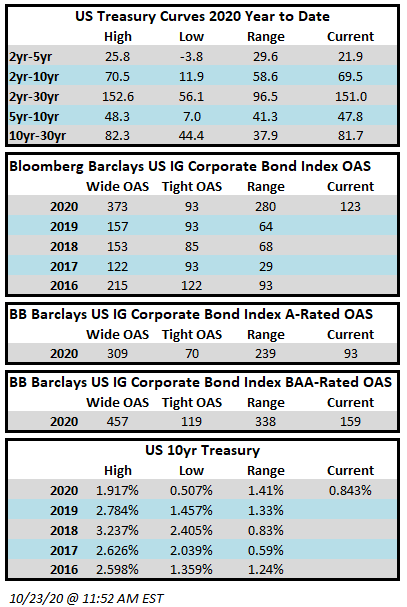Fund Flows & Issuance: According to a Wells Fargo report, flows week to date were -$0.9 billion and year to date flows stand at $48.7 billion. New issuance for the week was $12.8 billion and year to date issuance is at $425.8 billion.
(Bloomberg) High Yield Market Highlights
- The U.S. junk bond rally is set to extend the CCC-tier’s reign as the best-performing high-yield debt to seven consecutive weeks, with the index poised to end the week with gains of 0.5%. That beats higher-quality BBs and single-Bs.
- The CCC index has rallied for 24 straight sessions and posted gains of 0.2% on Thursday, the longest winning streak since 2011
- The high-yield primary has cleared its calendar ahead of the holidays, pricing $2.5b yesterday to take the month’s volume to almost $30b, the busiest December since at least 2006
- While the primary takes a break, one of the market’s top-five dealers expects more borrowers to return in the new year as the “extremely attractive” conditions should continue at least into the first quarter
- Average January issuance over the last six years has been in the range of $20b, according to data compiled by Bloomberg
- CCCs have accounted for 20% of the overall issuance volume this week
- Energy dominated the primary this week, accounting for almost one-third of the supply
- Junk bond yields rose 1bp to close at 4.41%, just 7bps off the all-time low of 4.34%. Spreads closed at +378bps, down from +379
- The index gained for the fourth straight session, with returns of 0.09%
- CCC yields closed at a new 6Y low of 7.37%, down 5bps, while spreads closed at fresh 2Y low of +677bpsm also down 5bps
- The high yield market may pause as the week winds down and stock futures move sideways while oil gains to a new 10-month high
(Wall Street Journal) Energy Agency Cuts Global Oil-Demand Forecast
- It will be several months before coronavirus vaccinations start to boost global oil demand, with the recovery in some of the world’s wealthy countries “going backwards” this quarter, the International Energy Agency said Tuesday.
- In its monthly oil-market report, the IEA cut its forecast recovery in demand for 2021 by 170,000 barrels a day to 5.7 million barrels a day.
- That included a reduction of 400,000 barrels a day to its forecast demand for the second quarter when analysts had expected the expansion of vaccination programs around the world to begin lifting economic activity.
- The agency also lowered its demand forecast for the final quarter of 2020.
- Demand has somewhat recovered in the second half from its 16% drop in the second quarter, but that resurgence “is almost entirely due to China’s fast rebound from lockdown,” the IEA said. But the demand outlook in the wealthy countries that make up the Organization for Economic Cooperation and Development is bleak, according to the IEA.
- With another wave of infections prompting a return to lockdown measures in Europe, demand there in the final three months of the year is expected to be even weaker than it was in the third quarter, the agency said.
- Expected pressure on the airline industry in 2021 was a major driver behind the IEA’s downgrades.
- Weaker demand for jet fuel and kerosene is projected to next year account for 80% of the shortfall of 3.1 million barrels a day in overall demand compared with 2019, meaning the world in 2021 would recover only two-thirds of the demand lost this year.
(Bloomberg) Fed to Maintain Bond Buys Until ‘Substantial’ Economy Gains Seen
- The Federal Reserve strengthened its commitment to support the U.S. economy, promising to maintain its massive asset purchase program until it sees “substantial further progress” in employment and inflation.
- At their final meeting of a tumultuous year, policy makers led by Chair Jerome Powell on Wednesday voted to maintain monthly bond purchases of at least $120 billion and scrapped their previous pledge to keep buying “over coming months.”
- The Fed meeting came as lawmakers on Capitol Hill tried to wrap up an agreement on new stimulus after months of deadlock, with both fiscal and monetary policy poised to help continue cushioning an increasingly shaky economy during the wait for widespread vaccine distribution.
- The Federal Open Market Committee said “economic activity and employment have continued to recover but remain well below their levels at the beginning of the year.” Its quarterly projections for the economy showed some improvement compared with September.
- The committee unanimously kept the federal funds target rate in a range of zero to 0.25%, where it’s been since March, and a majority of Fed officials continued to forecast that their benchmark lending rate would be held near zero at least through 2023.
- The FOMC “expects it will be appropriate to maintain this target range until labor market conditions have reached levels consistent with the committee’s assessments of maximum employment and inflation has risen to 2% and is on track to moderately exceed 2% for some time,” policy makers said, repeating language from their November statement.
